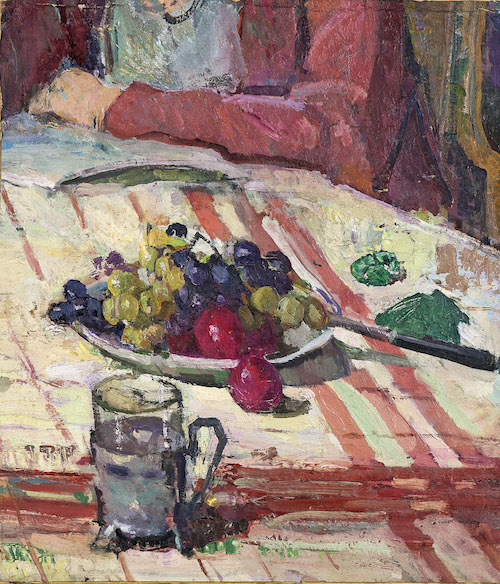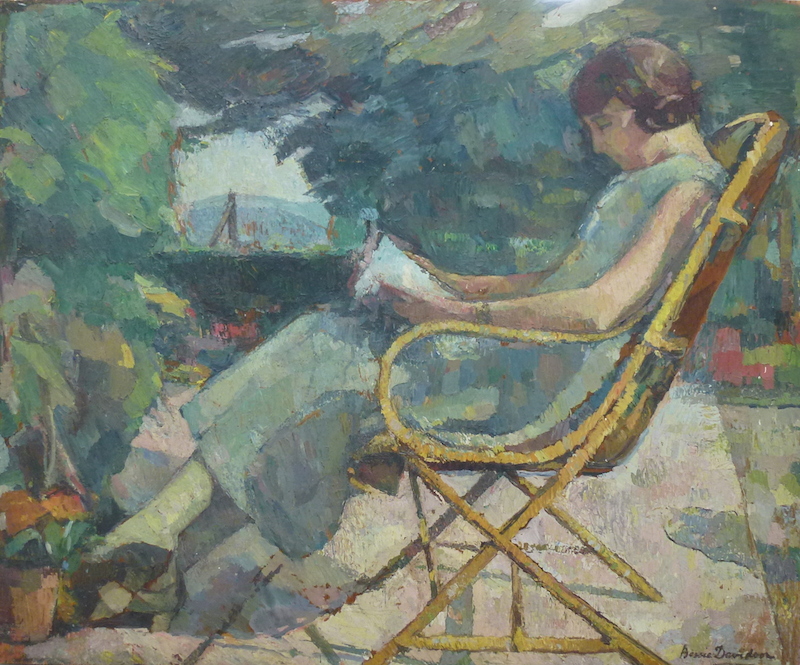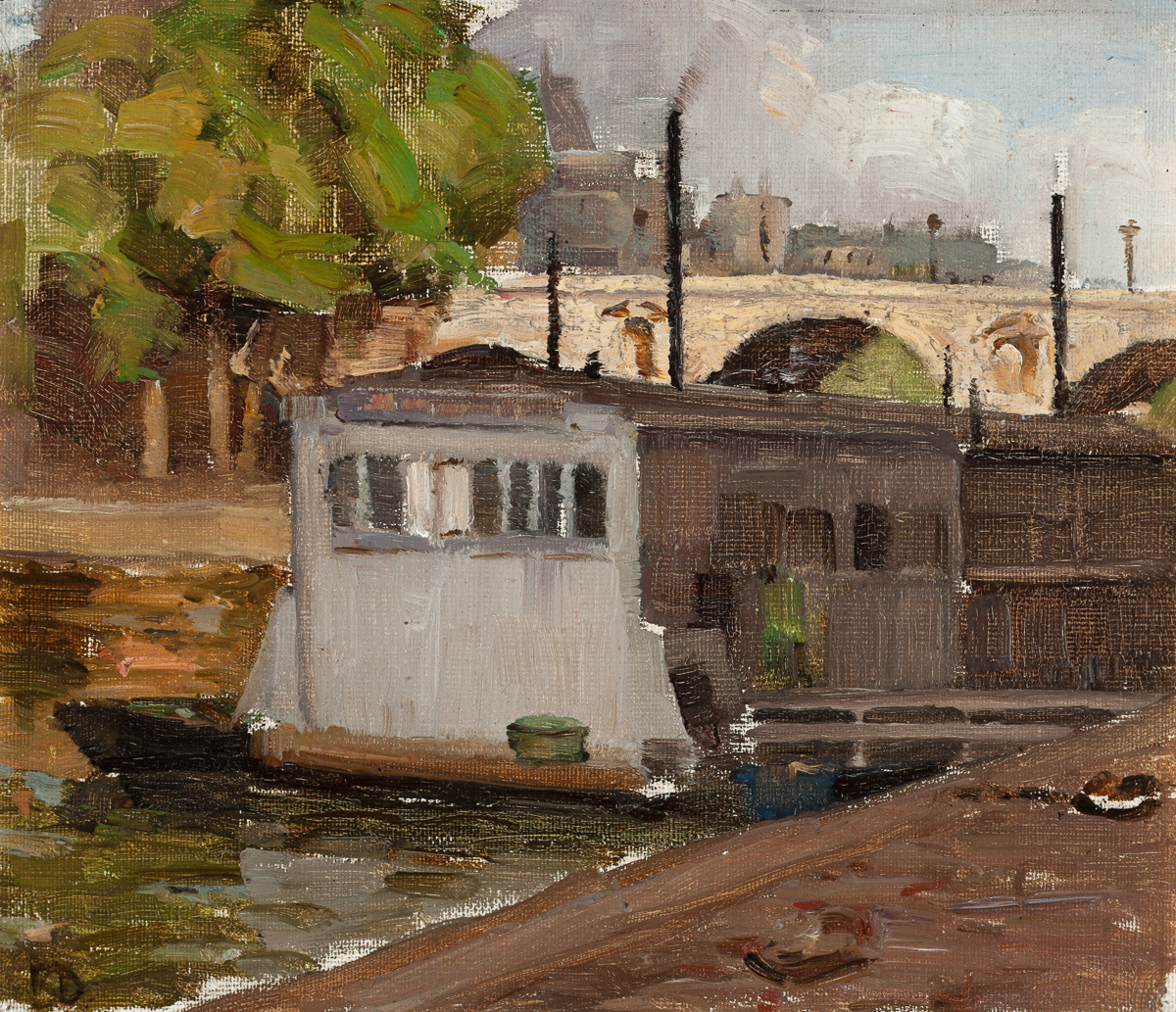Bessie Davidson
1879 - 1965
Biography
Bessie Davidson is known for her paintings of still lifes, interiors, portraits and landscapes imbued with a beautiful use of light, tone and colour, becoming quite vigorous in her use of both colour and texture from the 1920s-30s onwards. Her recognition as an artist is perhaps stronger in her adopted city of Paris where she was appointed Chevalier de la Légion d’Honneur for Art and Humanity by the French Government in 1931.
Adelaide-born and with a Scottish background, Davidson studied art under Rose McPherson (later Margaret Preston) and exhibited with the South Australian Society of Arts in 1901-03. She travelled to Europe with Preston in 1904 studying briefly in Munich, before moving to Paris where she attended the Académie de la Grande Chaumière. Her teacher was the painter René-Xavier Prinet and she was also taught by other French painters, including Raphael Collin and Gustave Courtois, and by the American Richard Miller. She exhibited at the Salon de la Société des Artistes Français and at the Société Nationale des Beaux-Arts in Paris at the height of fauvism in 1905. She was a founding member of the Salon des Tuileries.
She returned to Adelaide towards the end of 1906 and held a joint exhibition with Preston in March 1907. The National Gallery of South Australia purchased Davidson’s Portrait of Miss G.R. (ceramicist, Gladys Reynell) in 1908.
Davidson returned to Paris in 1910, establishing a studio in Montparnesse, which became her home until her death, with only brief visits home in 1914 and 1950. At the outbreak of the First World War, Davidson hastened back to Paris and volunteered for the French Red Cross working as a nurse.
Although she never married or had children, Davidson made strong connections with a large group of friends, particularly in Paris, becoming godmother to the daughter of her neighbour, Conrad Kickert an artist, critic and collector.1
Davidson gained critical recognition as an artist, exhibiting regularly in Paris and taking the opportunity to travel (particularly throughout France, and also to Austria, Russia, Italy, Switzerland, Russia, Morocco and regularly to Scotland to visit relatives). She was the first Australian woman to be elected to the Société Nationale des Beaux-Arts, (and was also appointed secretary in 1922). In 1930 she was elected Vice-President of La Société Nationale de Femmes Artistes Modernes; she was a founding member of the Société Nationale des Indépendants. She exhibited at the L’Exposition du Groupe Feminin at the Petit Palais in 1938 and was included in the Exhibition of French Art shown in Pittsburg, St Louis, New York and Edinburgh.
During World War II, Davidson remained in France living in Normandy and then Grenoble, returning to Paris in 1945. As an artist, she captured scenes of Paris such as Laundry Boat on the River Seine and Family Group.
Her compositions became more dramatic from the 1920s-30s onwards, including vigorously painted landscapes such as Lake Bourget with its use of strong dark colours and The Fortified House with its thick texture of paint.
However, her continuing interest in light, atmosphere and colour is perhaps most evident in her still-lifes. Still Life with Fruits and a Carafe contrasts the green of a watermelon against the royal purple plums with each colour heightened against the white table cloth and echoed in touches such as a green leaf or red bordered napkin. The composition is anchored by the central glass carafe, allowing the artist to play with light and reflection. Still Life with Bowl of Fruit makes clever use of horizontal and vertical lines to focus the viewer’s eye.
Autumn Table at Villeneuve lays a bountiful feast with the rich colours echoing the seasonal theme. The confident brushstrokes give a great sense of texture to the work and there is a harmonious and bold use of colour – the white tablecloth actually created from a myriad of colours all cleverly supporting the composition, highlighting the various elements either by echoing or contrasting. Still Life with Pears and Still Life with Flowers and Pears (the pears especially reminiscent of Cezanne) are both beautiful examples of her thought-out composition, expressive brushstrokes, and clever use of colour.
An exhibition of her work was held at the Osborne Art Gallery, Adelaide in 1967 and at the Australian Embassy in Paris in 1999 (Bessie Davidson: Une Australienne en France, 1880- 1965). Her work was also included in Australian Impressionists in France, National Gallery of Victoria, Melbourne in 2013. She was the subject of A Studio in Montparnasse: Bessie Davidson: An Australian Artist in Paris (Penelope Little, 2003).
Exhibitions
Bessie Davidson, Osborne Art Gallery, Adelaide, 1967
Bessie Davidson: Une Australienne en France, 1880- 1965, Australian Embassy, Paris, 1999
Australian Impressionists in France, National Gallery of Victoria, Melbourne, 2013
Bessie Davidson An Australian Impressionist in Paris, Bendigo Art Gallery, 2020
Achievements, Collections & Commissions
Public collections include :
Art Gallery of South Australia, Adelaide
National Gallery of Australia, Canberra
Fonds municipal d’art contemporain, Centre Georges Pompidou, Paris
Musée des Beaux-Arts de Beaune, Beaune
Musée des Beaux-Arts de Rouen, Rouen
Musée d’Art et d’Industrie Andre Dillgent, Roubaix
City of Edinburgh Council, Scotland City of Fife Council, Scotland
Bibliography
Literature:
Penelope Little, A Studio in Montparnasse: Bessie Davidson: An Australian Artist in Paris, Craftsman House, Melbourne, 2003
Bessie Davidson An Australian Impressionist in Paris, Bendigo Art Gallery, 2020



